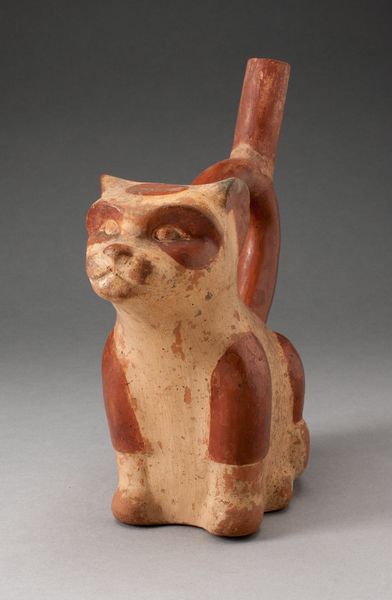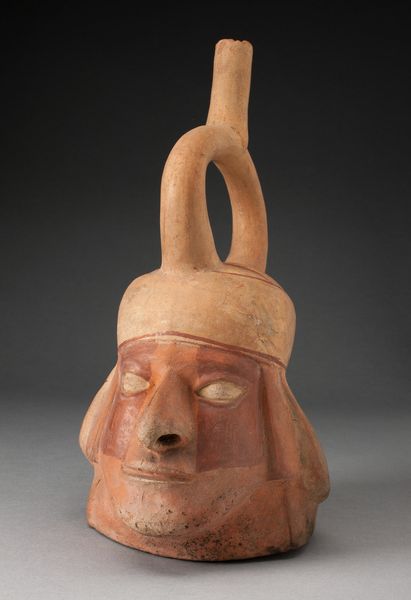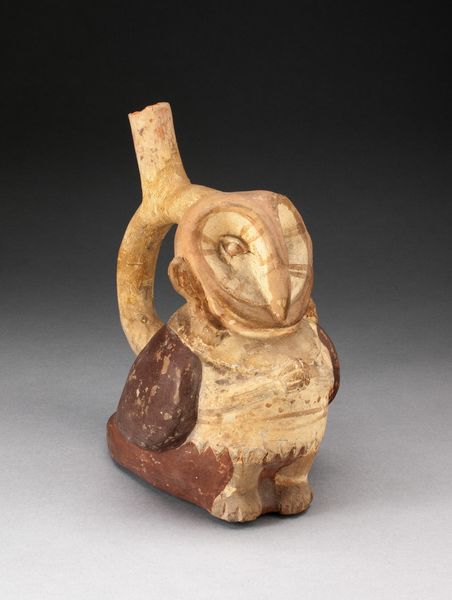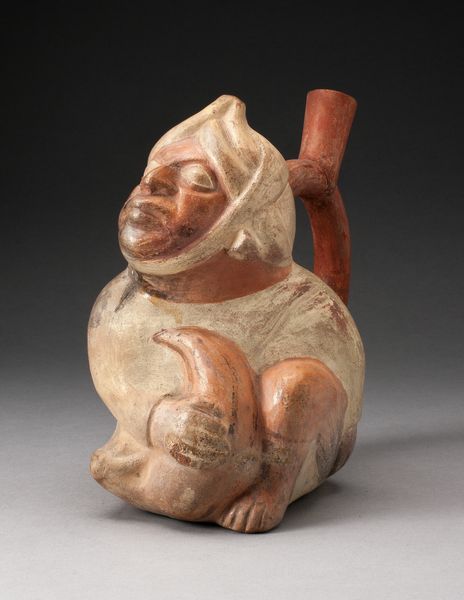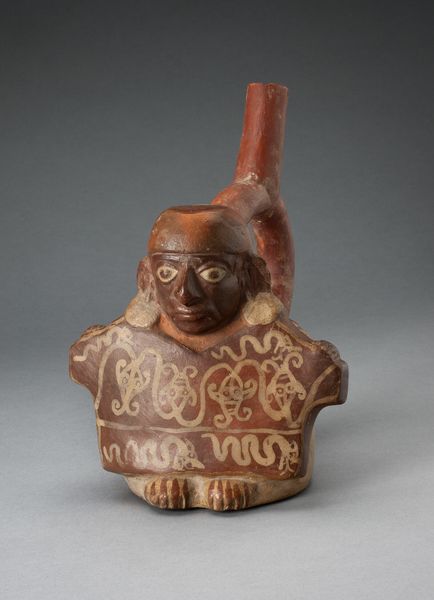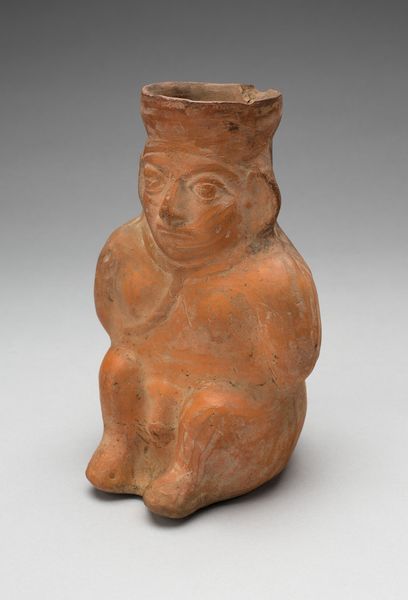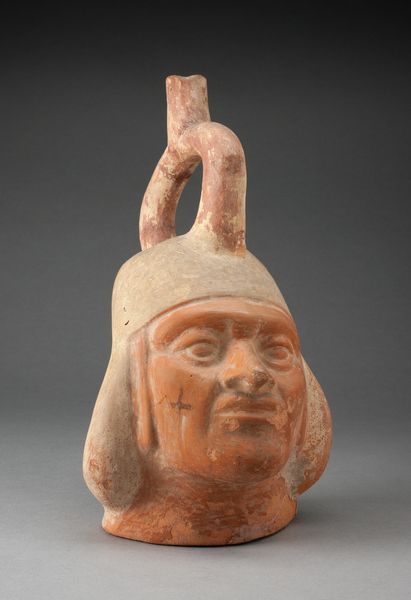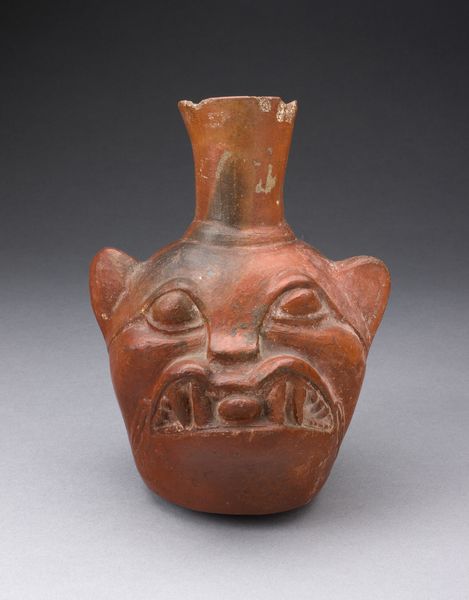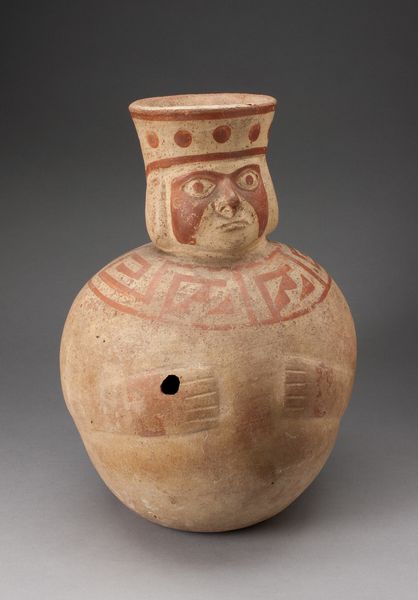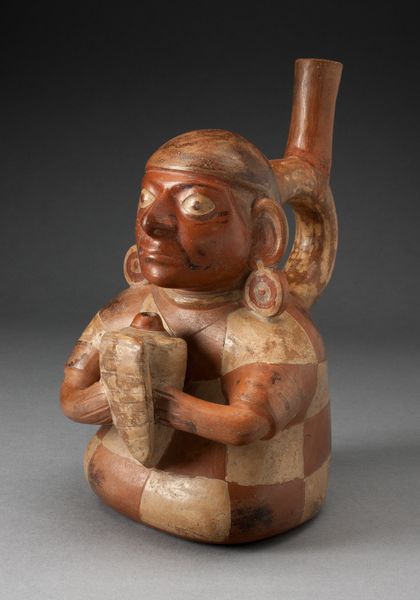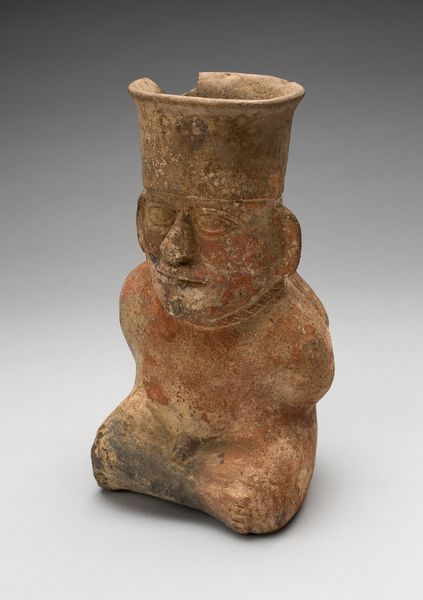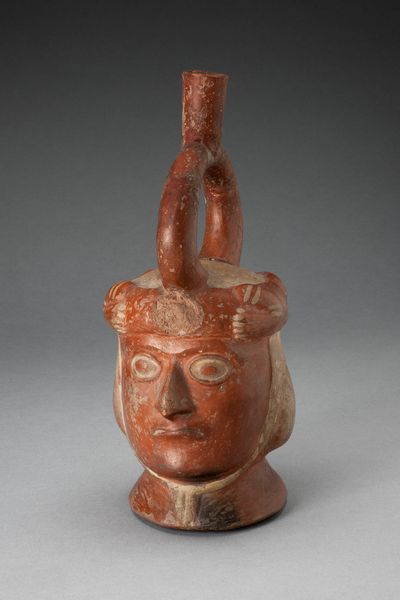
Jar in the Form of an Anthropomorphic Seal Playing a Drum c. 100 - 500
0:00
0:00
ceramic, sculpture, terracotta
#
ceramic
#
figuration
#
form
#
sculpture
#
terracotta
#
indigenous-americas
Dimensions: H. 43.2 cm (17 in.)
Copyright: Public Domain
Editor: This is a ceramic jar made by the Moche culture around 100 to 500 AD. It’s in the shape of a seal playing a drum! It has such a striking, almost playful quality. How do you interpret this work? Curator: This piece gives us insight into Moche society, their relationship to the natural world, and their beliefs. We can ask, how does the depiction of a seal – an animal that likely held symbolic importance – reflect Moche cosmology or social structure? Was this just a charming image? What role might music, represented by the drum, play in their rituals or daily lives? Editor: That’s fascinating. The drum really stands out – almost like he’s a court jester, meant to amuse. Curator: Precisely! But let’s delve deeper. Humor, especially when coupled with seemingly ‘primitive’ aesthetics, has historically been weaponized to delegitimize indigenous cultures. Could this jar, by humanizing an animal and portraying it in a social role, be subtly critiquing the societal hierarchies of the time? Or is it simply reflecting on a balanced ecosystem where all beings have their place and importance? How does our own 21st-century bias affect our viewing of the piece? Editor: So, seeing beyond face value to understand social structures. It's amazing to realize we project onto art from long ago. Thank you so much! Curator: Indeed. Recognizing how power dynamics, race, gender and other intersectional influences shape our own understanding of historical narratives is crucial. It opens up a world of possibilities for inquiry. I found our chat illuminating, thanks!
Comments
No comments
Be the first to comment and join the conversation on the ultimate creative platform.

